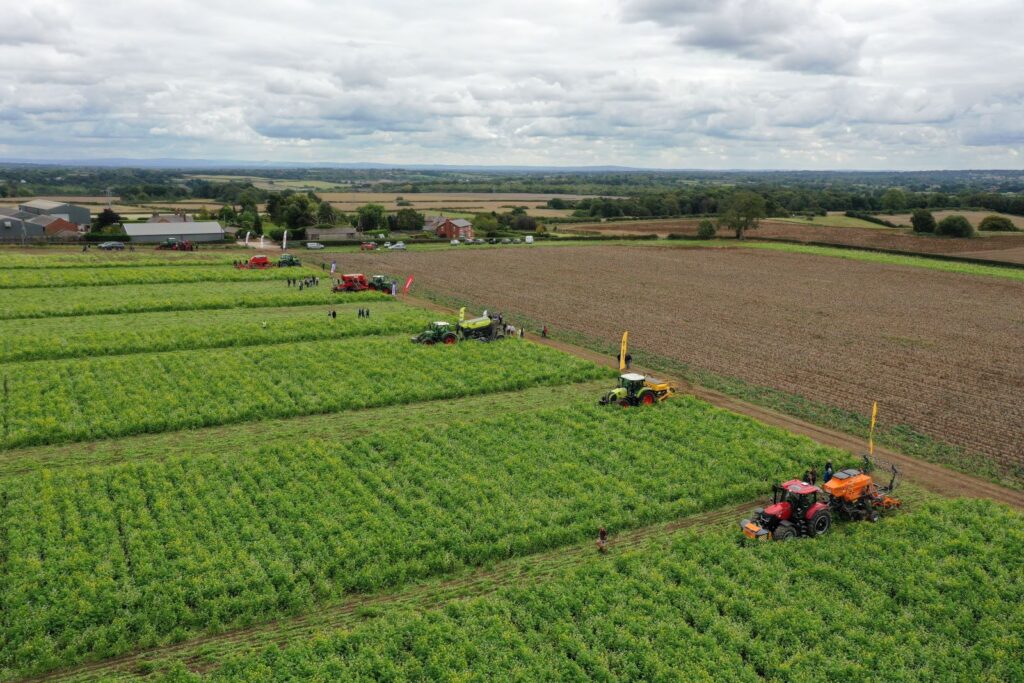Establishment trials highlight differences in drill performance
23rd March 2023
The Hutchinsons/CAS drill demonstration at Aston Grange Farm in Cheshire last autumn showcased the performance of different drills when drilling wheat into cover crops and the impact on subsequent crop establishment.

Drills in action at the Hutchinsons/ CAS demonstration in autumn 2022.
Plant counts taken after establishment and in the spring have revealed some interesting differences between drills that might help farmers decide which machine is right for their needs.
“When it comes to deciding which drill to buy, or cover crop to sow, there is clearly no one-size-fits-all answer,” agronomist Daniel Baron explained. “Every farm, field and soil is different, and everyone has their preferred brand, not to mention budget.”
“We wanted to trial several types of disc and tine drills and look at differences in wheat establishment as well as looking at the impact of a starter fertiliser.”
Mr Baron said the high rainfall in the north-west is one of the biggest challenges to crop establishment, with the region receiving an average of 900mm rain per year.
At the same time, cover crops can help pull moisture out of the soil and dry out the ground to widen the drilling window. “It all comes down to being able to get onto the fields to drill in the autumn,” Mr Baron added.
The 10 ha field for the trial, previously growing potatoes, was divided into sections of just under one hectare, with each section drilled with three types of cover crops using a range of different drill systems. The three cover crops established in August were:
- Maxi Cover- Buckwheat, white mustard and berseem clover- Designed for rapid growth
- Maxi Veg- Linseed, buckwheat phacelia and crimson clover
- Maxi Impact- Sunflowers, linseed, buckwheat, phacelia, crimson clover and berseem clover
On 15th September, Extase winter wheat was drilled at 168kg/ha, aiming for 330 seeds/m2 and 20% field loss to give 260 plants/m2.
“We also wanted to look at the effect that a starter fertiliser such as Primary P would have on the crop, so for the plots drilled with the Horsch, Avatar, Sky, Mzuri and Claydon drills, 10kg/ha of Primary P was used on half the plot,” Mr Baron added.
By 19th October, the team noticed some clear differences in establishment, indicated that disc drills coped better than tine drills in general with high residue levels.
“Looking at individual drill performance, the Horsch Avatar had the best average establishment in and the Kverneland U Drill did an excellent job even though not marketed as a direct drill,” Mr Baron noted.
“Most noticeably, Primary P had a significant impact on establishment with a 20-30% improvement over those plots that did not receive any. Plant counts were taken again in mid-February and there was still a clear benefit from those trials that received the Primary-P.”
The results of the trials are plotted on the graph below:
Mr Baron said final conclusions will be drawn once the complete picture has been obtained following harvest.
